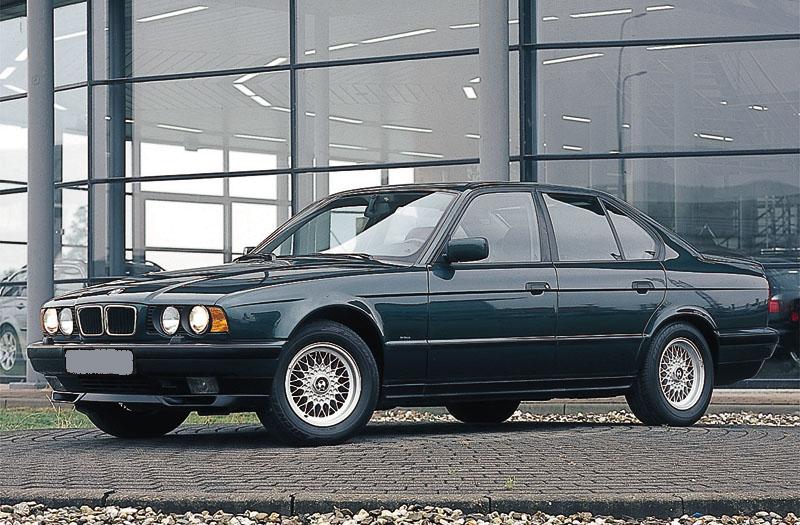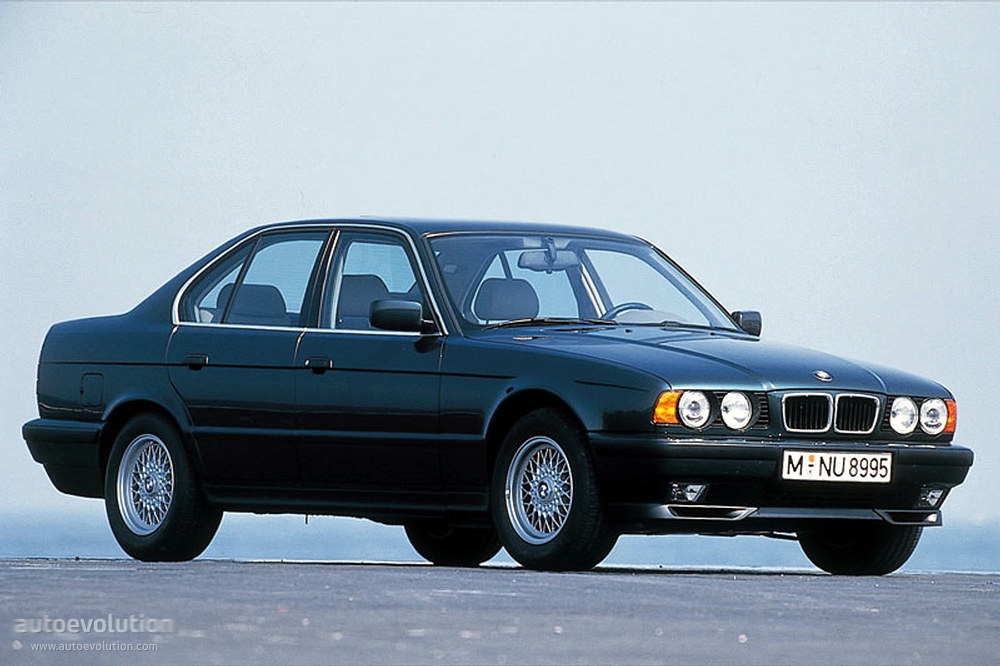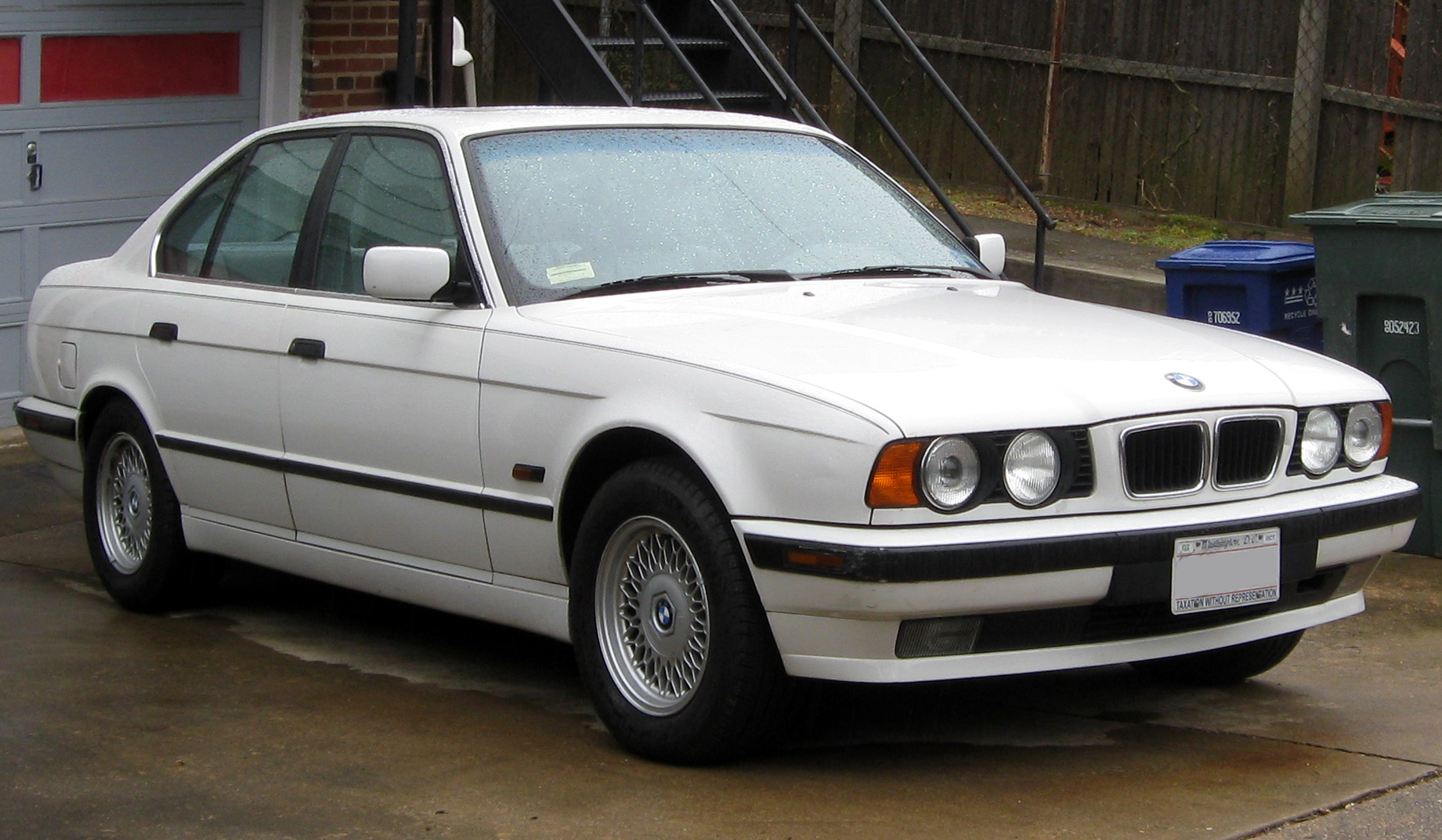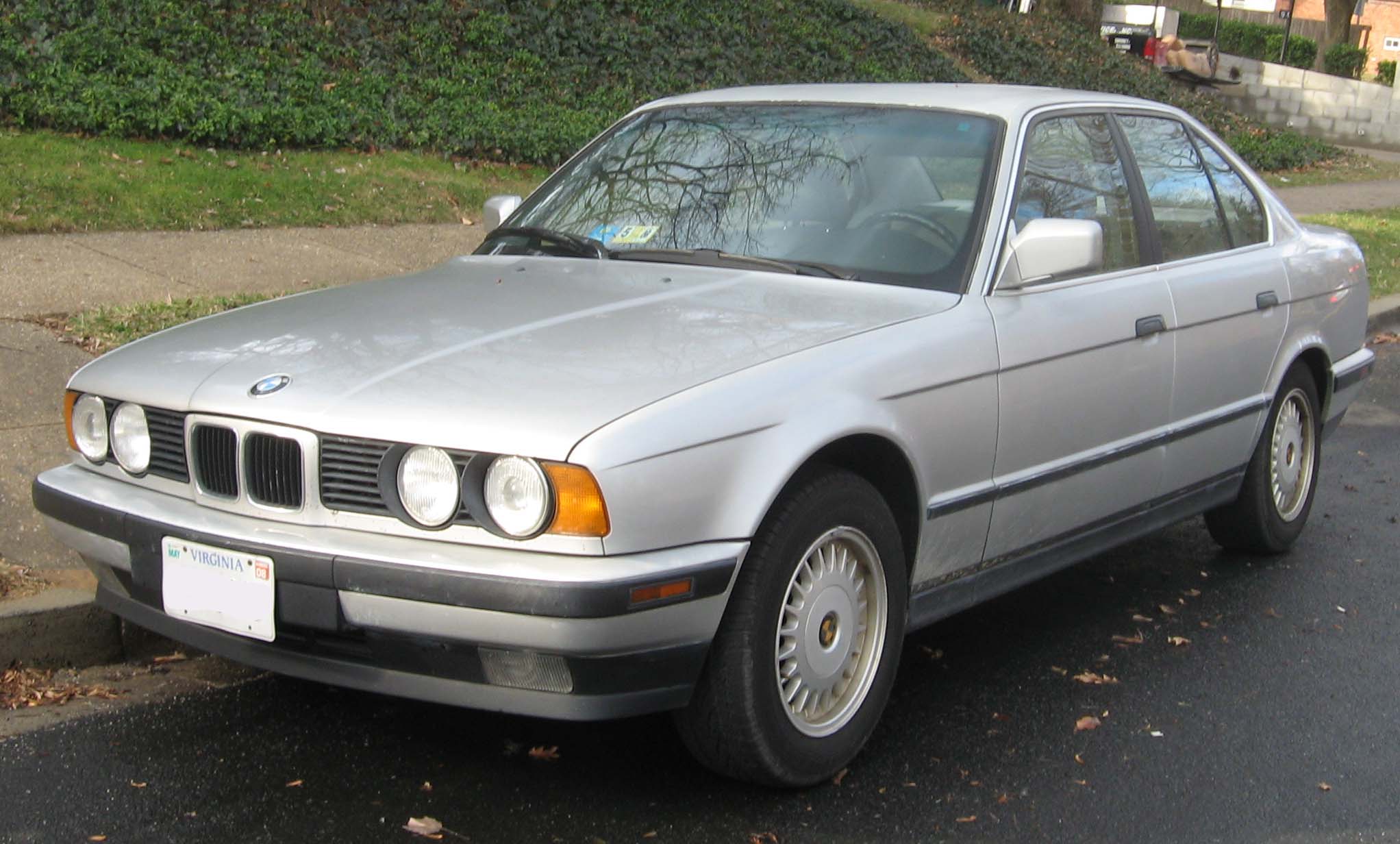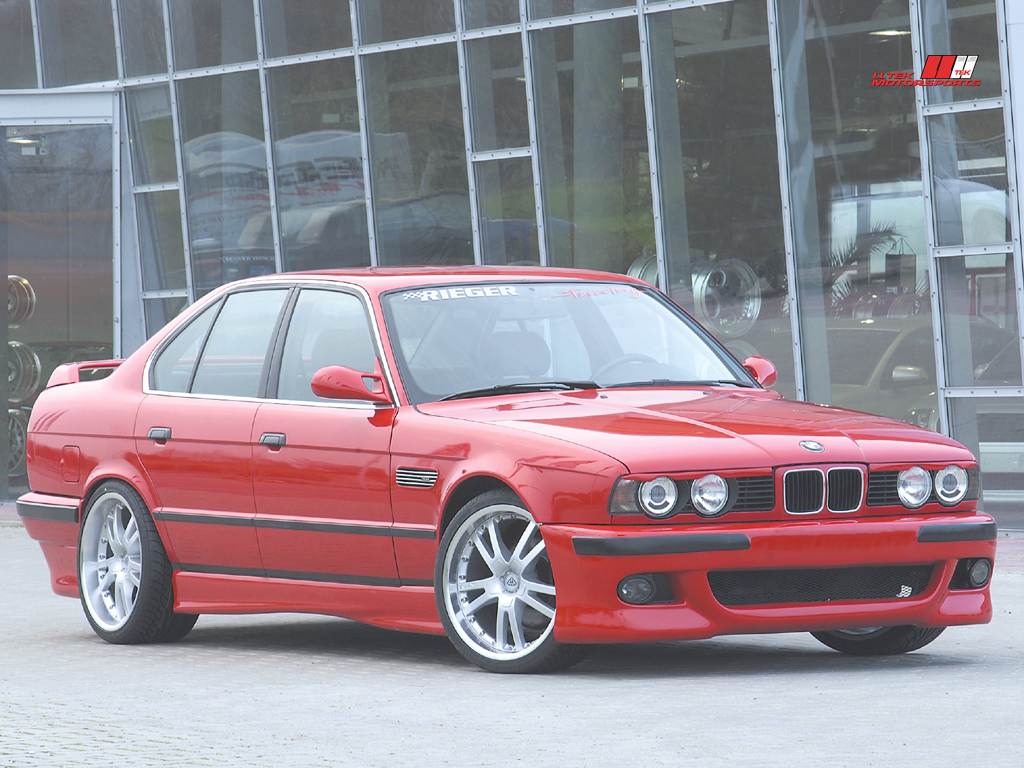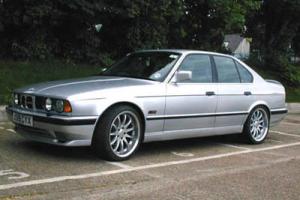BMW 5 Series (E34)
BMW 5 Series (1988-1992 )
In December 1987, BMW introduced the 5-series E34 before the successor to the E28. The E34 series was, as was its predecessor, the upper middle class. The appearance of the E34, which was created under Chief Designer Claus Luthe, modeled on the 7-series sedans in the E32 series.
Model history
At its market launch in January 1988 only the Saloon with the Twelve -valve inline six- cylinder (BMW M20 520i, 525i and the larger BMW M30: 530i and 535i ) was available already covered by other BMW series ( E23, E32 ) were known.
As of September 1991, there were as a second body variant the Touring, a wagon, which came up with a hitherto unique dual sunroof and a separately opening rear window.
The E34 was the first 5 Series, which could be ordered with all-wheel drive. This was just as a model 525ix ( M50B25 ) in two body styles ( sedan and Touring) available. The system had an electrically actuated limited slip differential between the front and rear axles, as well as a hydraulically actuated locking differential on the rear axle. In normal driving conditions the power distribution was between the front and rear axle 36 % / 64%. Depending on driving conditions and traction on the individual wheels, the control electronics could lock the center differential and the rear differential without driver intervention. The production numbers were for the BMW 525ix sedan ( E34 ) 4783 pieces and 525ix for the BMW Touring ( E34 / 2) 4,583 pieces. For the successor of E39, however, no all-wheel drive was available - only with the 5-series E60 is again a four-wheel version ( xDrive ) offered.
The E34 experienced during its construction in addition to technical changes - for example, is the car battery in the embodiments M30 and M60 always under the rear seat; the M20 they have in the engine compartment and the M50 from 1991 again just under the rear seat on passenger side - even small optical retouching.
From September 1992, the wing mirrors on the E36 were used.
Rear view
BMW 5 Series Touring (1991-1992)
From April 1994 all had E34, a new hood design with a wider grille of the V8 models. In addition, the previously unpainted front and rear aprons and the side skirts were painted in body color from that date.
From the autumn of 1995 there was with the 518g something exotic in the model range, which run on either gasoline or natural gas ( compressed natural gas) could be operated. The engine was with the 518i ( M43B18 engine type ), apart from the gas system, identical. The 518g did not exist with automatic transmission. A small button on the dashboard was to change to gas operation, whereby, however, could only start on petrol. The 518g was built less than a year and only as a touring.
Rear view
BMW 525i Touring ( 1994-1996)
In September 1995 the production of the sedan has been discontinued and this was replaced by the BMW E39 successor. The Touring was, however, still continued to be produced until June 1996.
Motors
The engine range was first modernized in the late summer of 1989:
As of September 1989, newly developed six-cylinder with 24 valves and chain drive the camshaft in the 520i ( M50B20, 2.0 l/110 kW) and 525i ( M50B25, 2.5 l/141 kW) installed. The engines are based on the M20. From 03 /1993 518i with the 4-cylinder engine came M40B18 (1.8 l/83 kW), later 04/ 1994, the M43B18 (1.8 l/85 kW).
From September 1992, the first time V8 engines ( M60B30, 3.0 l/160 kW and M60B40, 4.0 l/210 kW) available for the 5 Series, the six-cylinder received the Vanos variable camshaft control.
Three diesel models were on offer:
March 1988 to September 1991 the 524td ( M21D24, 2.4 l/85 kW), the (2.5 L/105 kW M51SD25, ) was replaced in September 1991 by 525tds. As of March 1993 also was the 525td ( M51D25, 2.5 l/85 kW ), a less powerful variant without charge air cooler available.
0 *) electronically limited, 540i from 03.1994: V / max 250km / h
Success
The E34 was a great success in the market. A total of 1,331,056 units were built; still the E34 is an integral part of the street scene in Germany. At launch, it was considered technically and optically very progressive and BMW brought - along with two years earlier published 7 series model ( E32 ) - a significant increase in reputation. Even today, the performance of the E34 are above average, notably the long-distance comfort and the reliability and maintainability of the technology make the E34 a comfortable touring car.
On the German used car market currently generate E34 after the last facelift the highest prices, especially the 525i with executive facilities, or the 540i with 6- speed manual transmission. The M5 and ALPINA models, however, are again priced significantly higher.
Reliability
The M20 engines are sensitive to thermal stress, which can occur due to lack of warm-up, and acknowledge this often with cracked cylinder heads.
The M30 engine series is considered very robust, falls at irregular maintenance but by run-in camshaft and rocker arm broken.
As a not very durable applies to the M40, which is noticeable with the run-in camshaft, worn hydraulic tappets, oil sludge formation and timing belt cracks before the scheduled change interval. His successor, however, M43 is stable in general.
Also to be robust and durable, you can refer to the M50, the biggest problem, however, is the water pump. Here regularly break the pump gears from the drive shaft, as they were made out of plastic which becomes brittle with time; the water pump, however, can be replaced by new models with metal or carbon fiber wings. Rare drop from individual ignition coils.
Since the same ignition coils were used in the M60, this problem exists even with this engine. However, a common problem are the screws fixing the oil pump which regularly dissolve due to engine vibration and find themselves in the oil pan. Even the sensitive ceramic catalysts of the M60 fall frequently collapsed and clog the exhaust - replacement is expensive accessory retailers but also matching Metallkats are available.
The introduction of environmental zones, the diesel models of the E34 not play a major role on the used car market more because it more than € 2 and thus only receive a red sticker. Likewise, they often fall on by faulty injectors and can match neither the consumption nor in the performance with the latest common-rail diesel engines. All installed in the E34 diesel engines operate on the vortex chamber method.
The E34 was only partly zinked, therefore, rust depending on care and year in the filler cap recess on the lower door edges, the fender, the jacking points, occur under the rear bumper and especially when touring on the tailgate. Later model years may be more affected by rust than earlier, since 1993, the BMW production Ground surrounded on water-based paints.
Beat the rubber bearing both axes, depending on the tires 120000-200000 km are. The front axle needs to be completely overhauled usually after 200,000 km.

